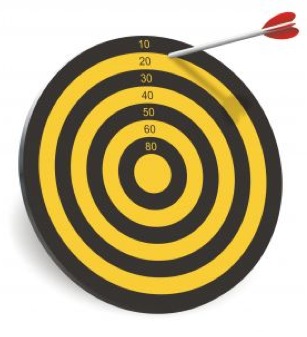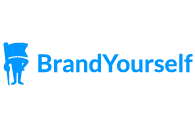
FROM THE VAULT: Resume Preparation- 9 Professional Resume Writing Tips
I was browsing through a few dozen resumes today, and I noticed some common mistakes. I thought I’d share with you some professional resume tips to help you to learn from their mistakes.
Below are the professional resume tips you should take away from each mistake:
1. Use the body of your email to sell yourself
Actual Example: Someone emailed me their resume saying: “I’m a current graduate student at [school]. I would like to apply for the [open position]. The attachment is my one-page resume. I hope to have further contact with you in the future. Thanks.”
Analysis: Is this a human or a robot? The body of the email is both uninformative and abrupt. For all I know, they used that exact text to apply for a job at McDonald’s. I get no sense of who the applicant is. Ask yourself: what will make me want to open your resume if I have dozens of others to go through?
The Fix: Treat your email body like a cover letter.
In the body of your email, give me something that makes me want to learn more about you.
Treat your email like a cover letter by introducing yourself in a moving way. Make me think: ah… this is a real, likable person. I want to learn more about what they can do for me.
Be concise and make sure you:
- Demonstrate that you get things done by identifying a few concrete tasks you completed or quantifiable change you brought to related projects.
- Demonstrate your passion by describing how this position relates to what excites you in life.
2. Send your resume as a PDF
PDF files can be viewed on all computers, regardless of operating system or software version. It would be silly to send me a .docx if there’s any chance I can’t open it.
Never send your resume as a .docx file. Hiring managers will not take the time to convert your resume to a .doc so they can read it. (Many don’t even know how). When you have lots of applicants, it just doesn’t make sense to waste time converting dozens of resumes.
Always. Send. A. PDF. Otherwise, it may never get opened.
3. Name your resume like this: “[First] [Last] Resume.pdf”
Imagine you’re a hiring manager for a moment. You have a folder full of resumes on your hard drive. You have too many applicants to remember their names. Wouldn’t you want your resumes to have consistent file names – one single naming system so you can quickly see exactly whose resume is whose, alphabetically?
It’s always a breath of fresh air when I don’t have to manually change the filename of your resume. And every breath of fresh air I get when dealing with your resume, the more I like you. It’s probably unfair, but when dealing with dozens of applicants, that’s just not something I want to have to deal with.
The bottom line is that every time you make my life easier, you score points in my book. So name your resume: First Last Resume.pdf.
4. Use bold text to emphasize your most important points
Hiring managers don’t have much time to make decisions. That’s why in your email body, you should put your most important points in bold. The items that will win you the job should jump off the screen.
One applicant today took the time to bold each company name and position he held in the body of his email. This made it easier for me to scan his text, filter out the noise and hone in on his credentials. Before I began reading through his email, I could already see where he’d worked. And after I finished, the bold text still stood out, reminding me again of his credentials. He successfully emphasized his most important points to me.
How can you use bold to strengthen the text of your email?
5. Include concrete actions and quantifiable results. Vagueness is a deal-breaker!
The more vague you are about what you’ve done, the less I care.
This is weak: “Worked on Project X,” or “Led Project Y.”
How do I know what you did on Project X? Or what results you achieved? What does it mean to lead Project Y? What did you actually do?
This is strong: “Identified and reported 27 bugs per day testing Software X,” or “Developed complete end-user requirements for Project Y based on 15 two-hour customer interviews.”
This tells me you actually did something. Concreteness is your best friend. If your bullet points make me clearly imagine you doing a specific task, then I can picture you working at my company.
Vagueness is your enemy. If you use broad verbs that don’t describe specific actions, then I can’t picture you working at my company. I don’t care if you “oversaw” or “worked on” something. That means diddly to me. What did you actually do?
This is weak: “Responsible for new client acquisition.”
“Responsible for” is too vague. So is “oversaw.”
You were responsible for new client acquisition, but did you actually do it? That doesn’t tell me what you really did. Nor does it quantify the results you achieved.
This is strong: “Cold-called 50 potential clients a week, converting 10% into paying customers.”
That’s much better. It tells me exactly what you did. I can picture you on the phone, chatting it up with prospective customers, winning over new clients and increasing my company’s bottom line.
6. Include two or three quotes from good references.
Everybody says “references available upon request.”
To stand out, actively insert two or three “testimonials” from people you’ve worked with. It can be a past bosses, co-workers, project teammates or even professors. Keep each quote under three sentences. Make sure they concretely support your greatest strengths.
This is weak: “John was a great teammate to work with on our Project X.”
This says nothing about what John is good at. Vague verbs like “great” or “excellent” don’t tell me anything about John. What is John specifically great at? Sometimes a brief story is the most effective way to illustrate your strengths.
This is strong: “We hired John after our last programmer left us four weeks behind schedule. John’s ability to consistently meet coding deadlines under high pressure helped put us back on schedule. He was a hard-working and invaluable member of our team.” Or, “John’s ability to connect emotionally with our customers made him our second most highly-rated customer service rep. He always left our users with a smile.”
7. Be a human, not a robot.
Take a moment in your email/cover letter to say something I can relate to. “I am really interested in working with you because we share a love of great design.” Okay, so you are in fact human and you acknowledge that I am a person with similar interests. Maybe we would even get along!
Don’t be afraid to include you interests on your resume as well. They show that you lead an interesting life and are not as boring as your bullet points might make you sound.
8. Give your resume to two other people to proofread.
You are going to miss a typo. It doesn’t matter if you have super-human editing skills. Do yourself a favor: have two other people read over your resume and cover letter before you send them in. Inevitably, those people WILL find a typo that you missed. I guarantee it. A fresh pair of eyes can only end up helping, not hurting you.
9. Always provide your phone number.
If you actually care about getting the position you’re applying for, you’ll make it as easy as possible for me to contact you. If all you give is your email address, it appears that you don’t care enough about the position to be contacted in person. Always, always provide your phone number.
Start incorporating these nine professional resume tips into your resume right now. What can you improve?
- Use the body of your email to sell yourself.
- Send your resume as a PDF.
- Name your resume like this: “[First] [Last] Resume.pdf”
- Use bold text to emphasize your most important points.
- Include concrete actions and quantifiable results. Vagueness is a deal-breaker!
- Include two or three quotes from good references.
- Be a human, not a robot.
- Give your resume to two other people to proofread.
- Always provide your phone number.
